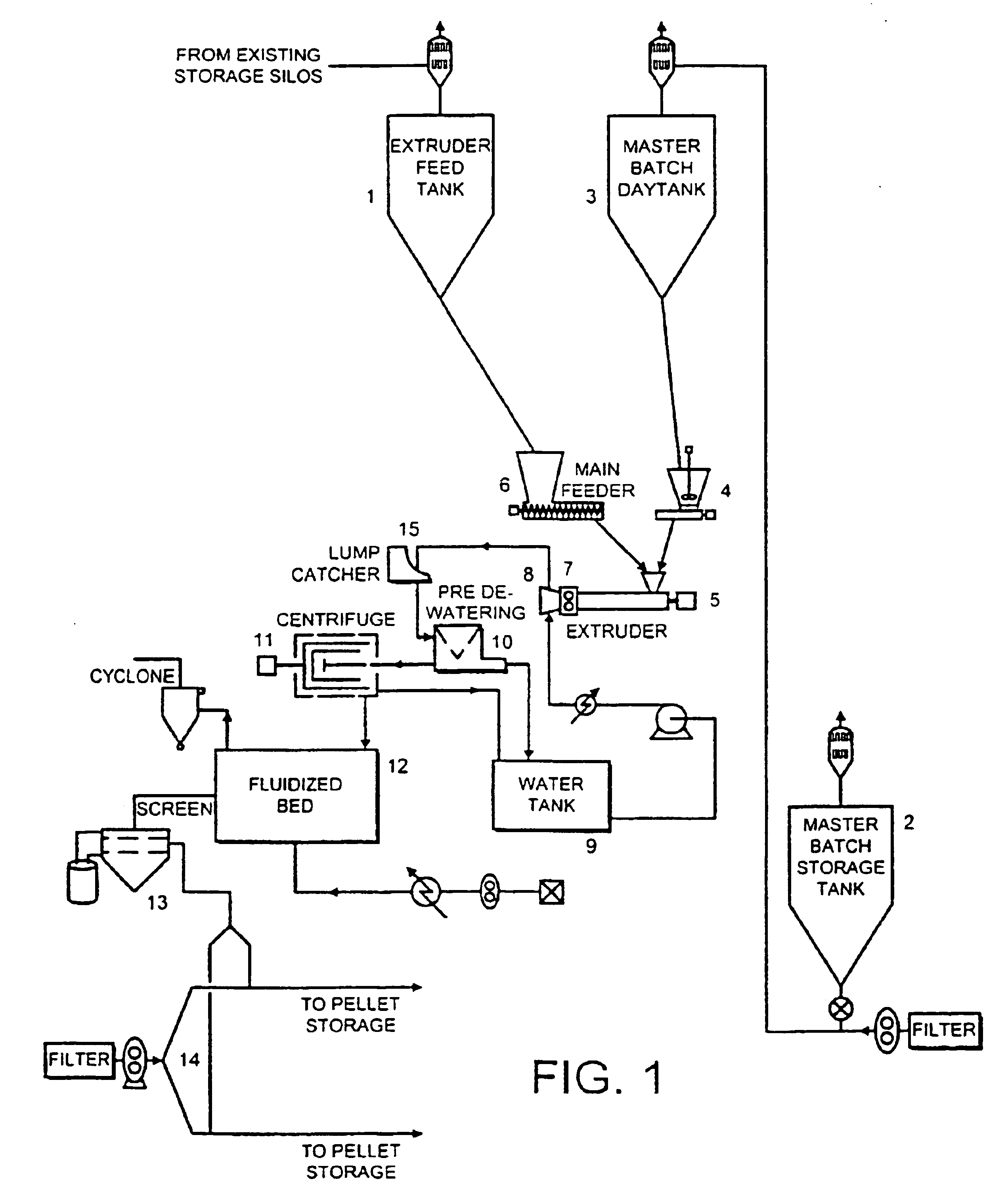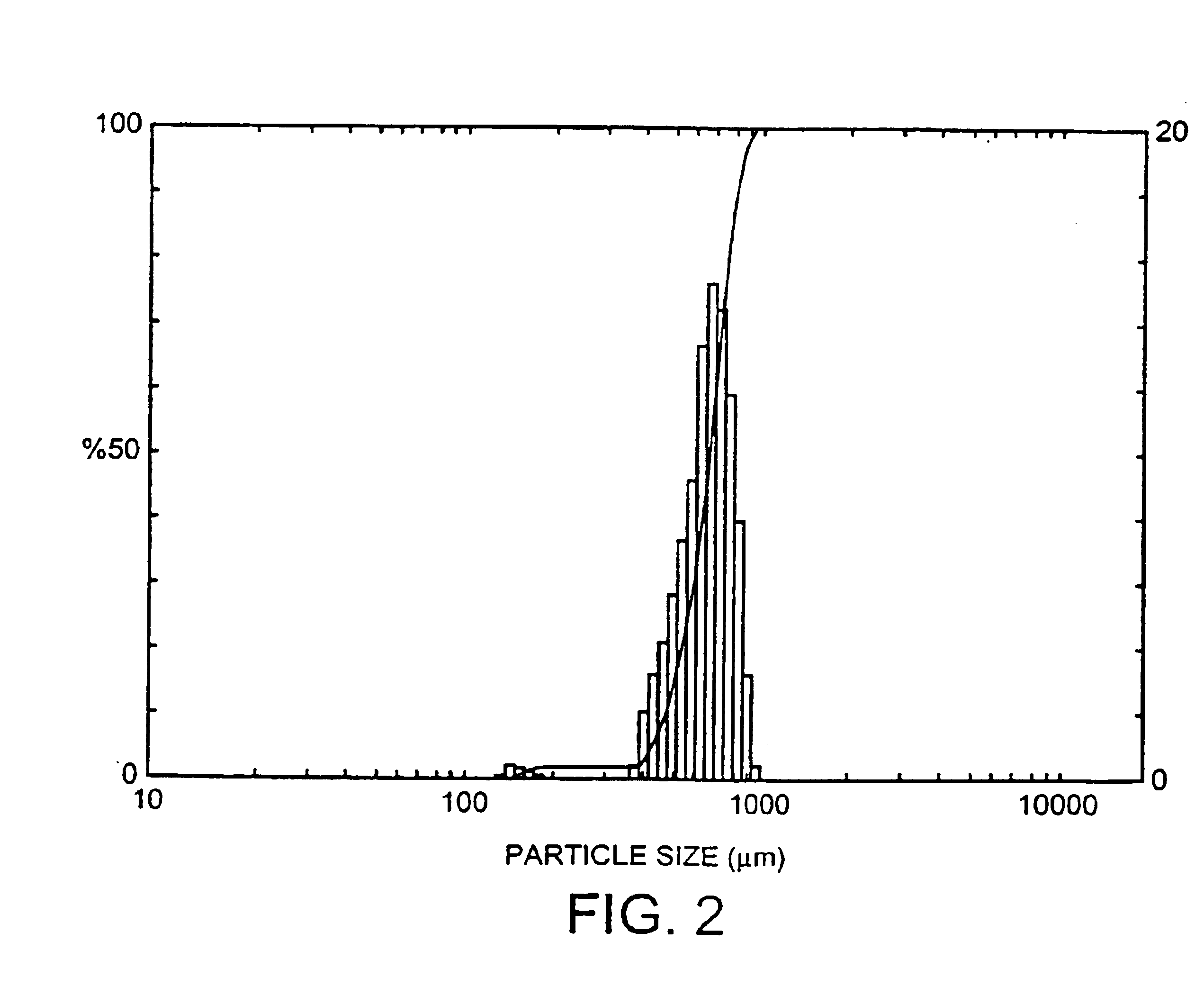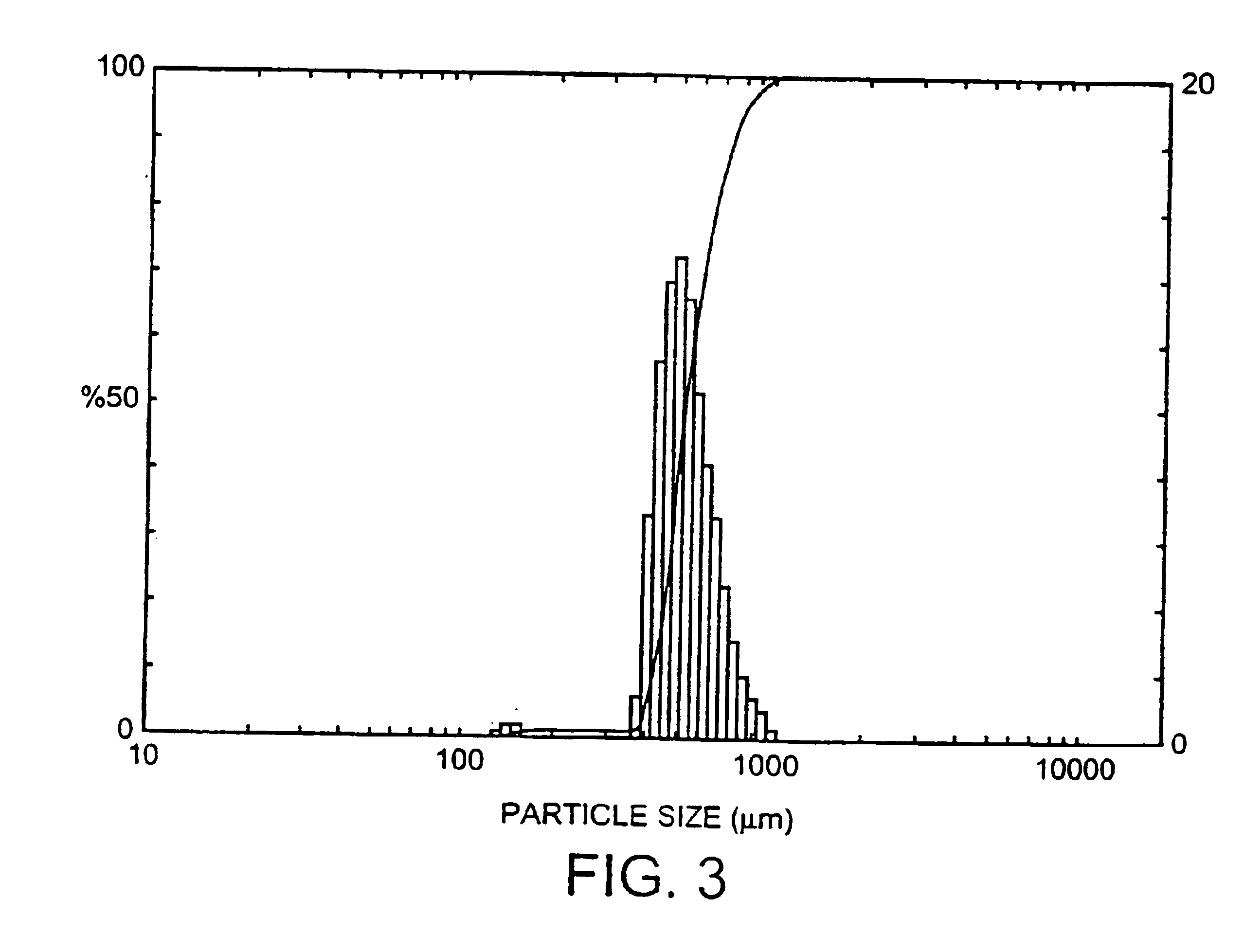Method of producing pelletized polyolefin
a technology of polyolefin and pellets, which is applied in the direction of transportation and packaging, tire parts, coatings, etc., can solve the problems of noisy grinding process, unfriendly environment for workers, and inability to produce pellets that are not suitable for rotational molding, etc., to achieve the effect of improving dry flow and bulk density
- Summary
- Abstract
- Description
- Claims
- Application Information
AI Technical Summary
Benefits of technology
Problems solved by technology
Method used
Image
Examples
example 2
Pinhole Density
[0052]Micropellets, prepared analogously to those of Example 1, were rehydrated to water contents of 80 to 7000 ppm (by weight). The water contents were measured by the Karl Fisher method (for lower water contents) and by gravimetry (for higher water contents).
[0053]Cubic boxes were prepared using the different samples using a Rotospeed E-60 rotomoulding apparatus at an oven temperature of 270° C. The same face of the box was cut off in each case and cleaned. A mask with eight 14 mm×18 mm windows was placed over the cut and cleaned face and, using a Wild Photo macroscope M420 with ring lightening, a digital picture was taken of each window and transferred to a computer. The images were processed to determine the number of surface pinholes greater than 100 μm in diameter. FIGS. 5 and 6 show such images of surfaces produced using 270 ppm wt and 160 ppm wt water content micropellets. As can be seen, at 160 ppm wt water content, virtually no pinholes can be detected.
PUM
| Property | Measurement | Unit |
|---|---|---|
| particle size | aaaaa | aaaaa |
| size | aaaaa | aaaaa |
| water content | aaaaa | aaaaa |
Abstract
Description
Claims
Application Information
 Login to View More
Login to View More - R&D
- Intellectual Property
- Life Sciences
- Materials
- Tech Scout
- Unparalleled Data Quality
- Higher Quality Content
- 60% Fewer Hallucinations
Browse by: Latest US Patents, China's latest patents, Technical Efficacy Thesaurus, Application Domain, Technology Topic, Popular Technical Reports.
© 2025 PatSnap. All rights reserved.Legal|Privacy policy|Modern Slavery Act Transparency Statement|Sitemap|About US| Contact US: help@patsnap.com



